Sword Hilt: Its Variety and Evolution
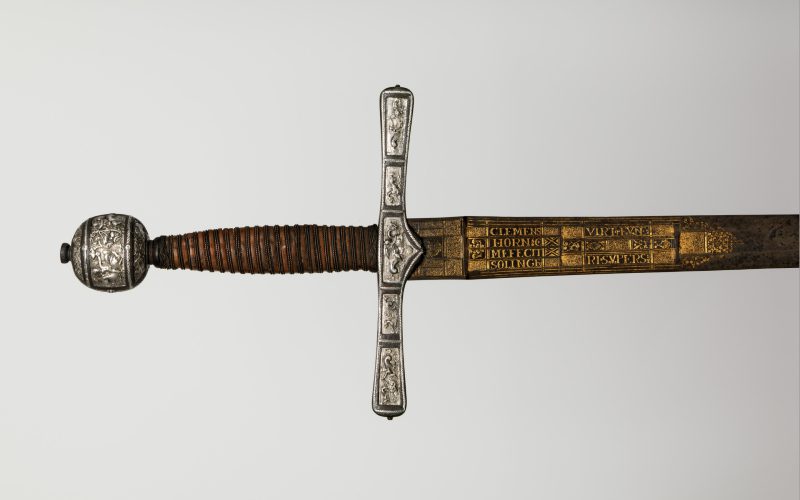
What’s in this article?
A
Let’s explore the history of the
Pommel
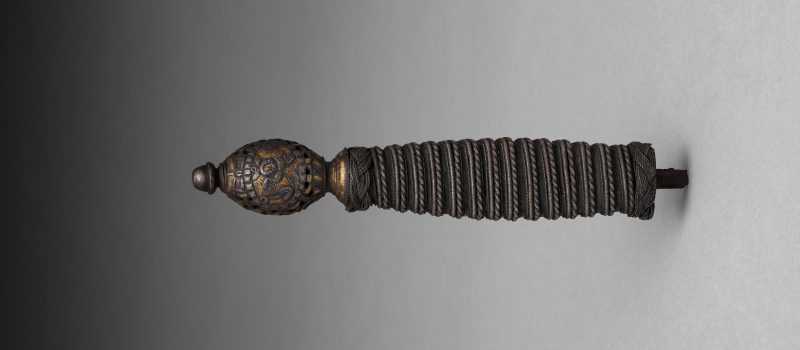
Often a rounded knob at the end of the
L-Shaped Pommel

Some swords like shamshir and kilij feature an L-shaped pommel, sometimes with a cord loop. Classic examples of the Persian shamshir can also be found in Turkey, India, and other parts of the Islamic world.
Dish-Shaped Pommel
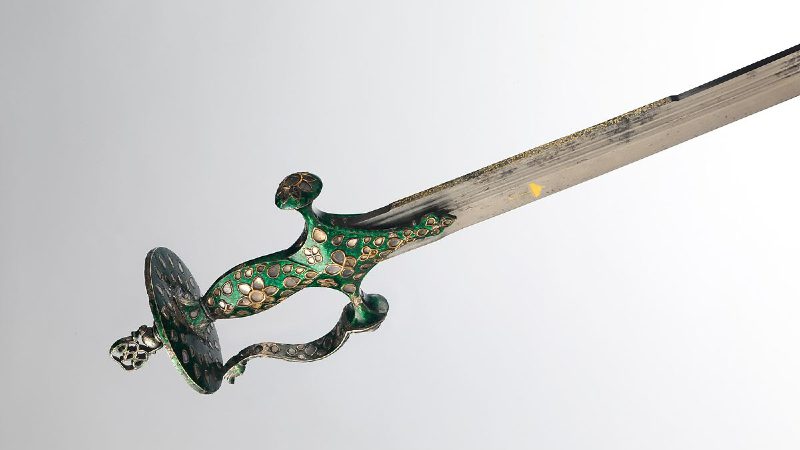
The Indian
Ornate Pommel
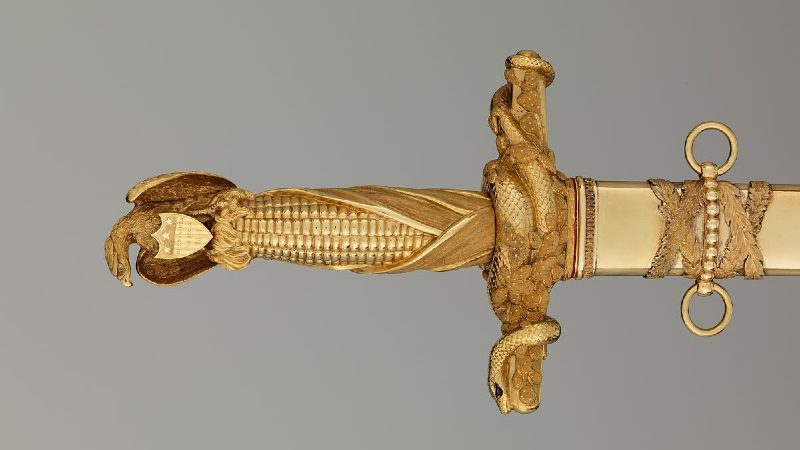
Some pommels were in the shape of animal heads like a lion, eagle, and other creatures. They were common in hanger swords and ceremonial swords. Often richly decorated, the smallswords were an integral part of a gentleman’s wardrobe, so pommel designs reflected their style and wealth.
Sword Handle or Grip
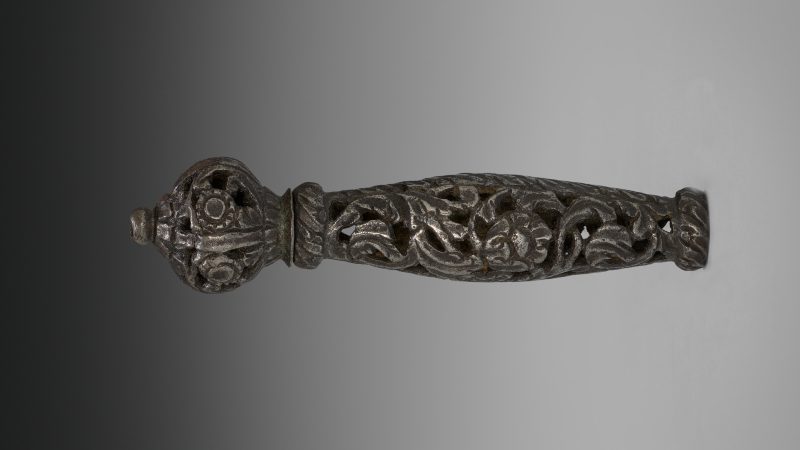
Early swords had wooden grips, but some featured leather grips wrapped in twisted brass wire. Indian swords usually had ivory grips, sometimes carved and of outstanding craftsmanship. By the 17th century, Italian dress swords often featured steel handles, usually pierced or chased.
One-Handed Grip
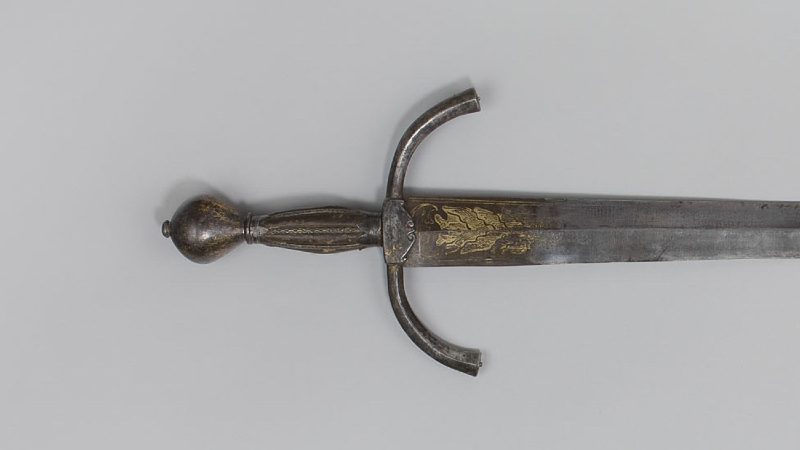
The arming swords of medieval knights had a one-handed grip, leading many to erroneously call it a short
Hand-and-a-Half Sword Grip
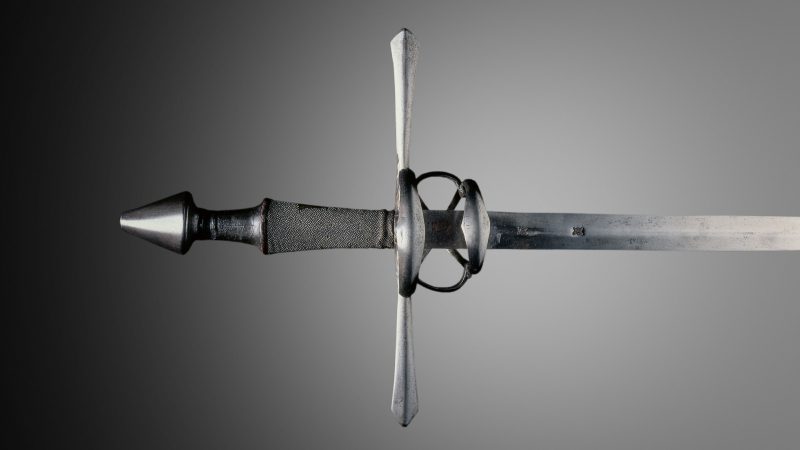
Some swords are more than one-handed but somewhat less than two-handed. Fencing masters often refer to them as bastard swords. Generally, the grip allows a wielder to use it with one hand with the addition of two or three fingers from the other hand, hence the name hand-and-a-half
Longsword Grip
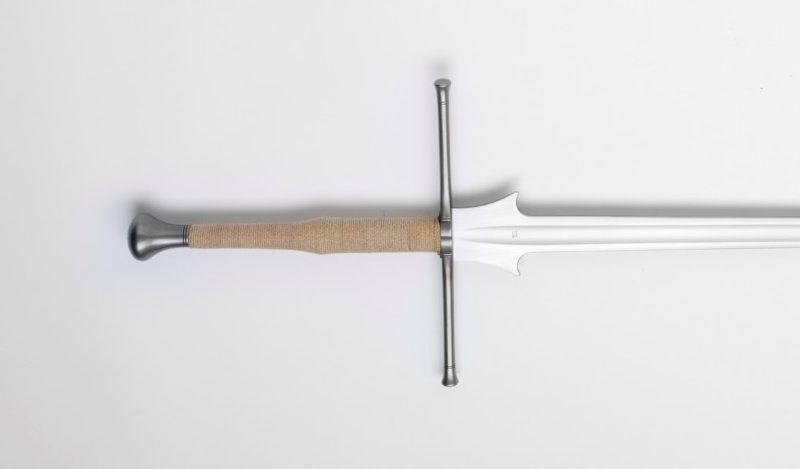
The distinguishing feature of a longsword is its long grip that allowed the use of two hands, though it was lightweight enough to wield with one hand. Since it was a sidearm for armored fighting, it was short enough to be worn on the belt.
Two-Handed Sword Grip
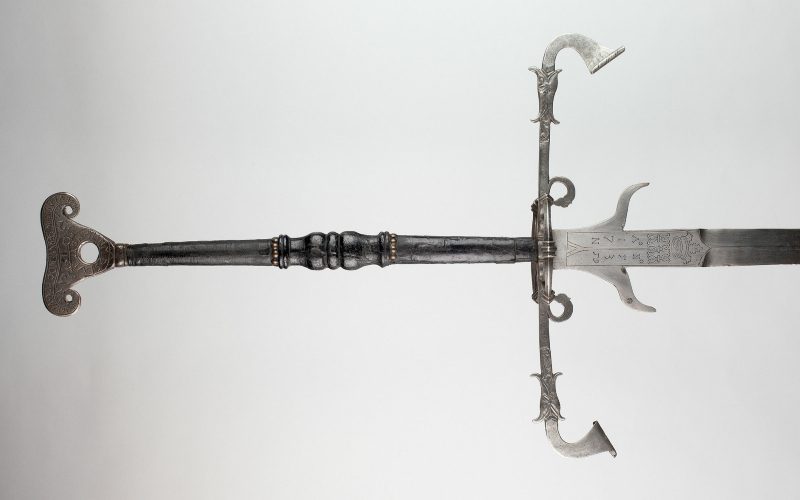
Sometimes called great swords, two-handed swords like the German zweihander required the use of two hands. Unlike longswords, they were not lightweight enough to use with one hand. Their extremely long grips allowed the wielder to use the weapon with both hands with space in between.
Pistol-Style Grip

The Ottoman saber, like the Persian kilij, usually features a distinctive pistol-style grip. The Mamluk warriors who descended from non-Arab slaves also wielded a similar sabre which inspired the Mameluke
Sword Guard
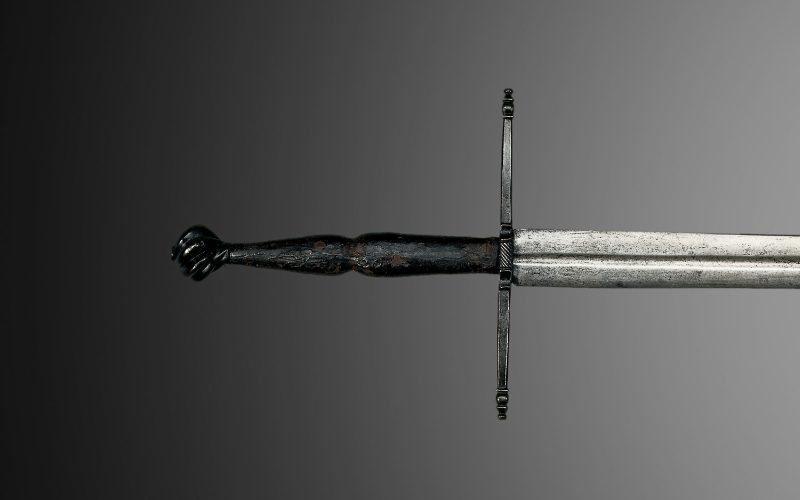
The
Some swords had quillons that curved toward the blade and others toward the handle, though the latter was impractical for a
S-Shaped Quillons
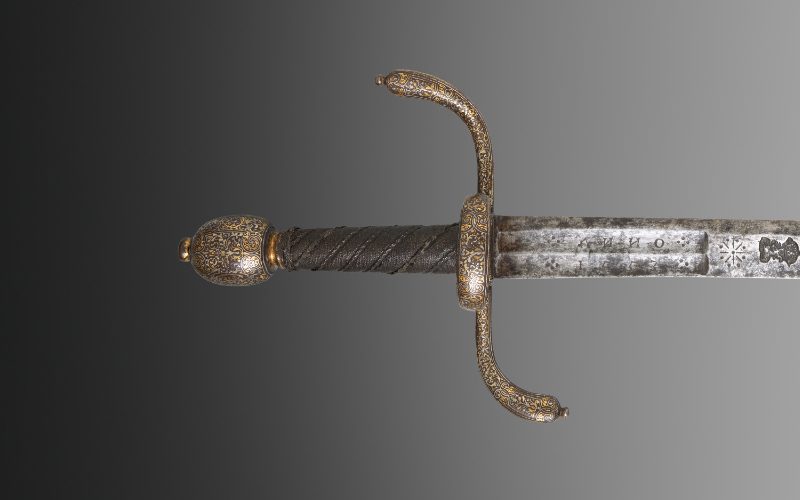
Some swords of the 16th century featured crossguards extended forward and backward forming the forward and rear quillons. The S-shaped quillons were common to hunting or hanger swords, named because of the way they were hung from the belt. By the 18th century, these swords became part of the standard military weapon in several armies.
Side Rings
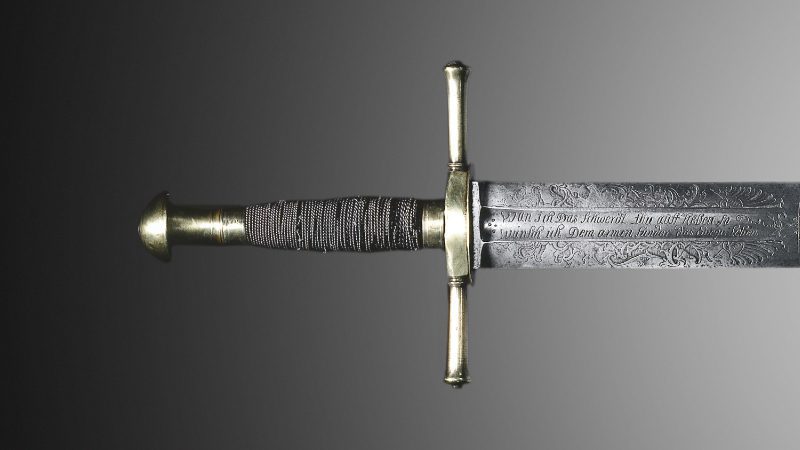
Also called ring guards, the side rings provided extra protection to the hand. They are at the center of the crossguard on both sides. The Scottish Lowland swords, rapiers, two-handed swords, and some executioner’s swords often featured ring guards.
Finger Guard
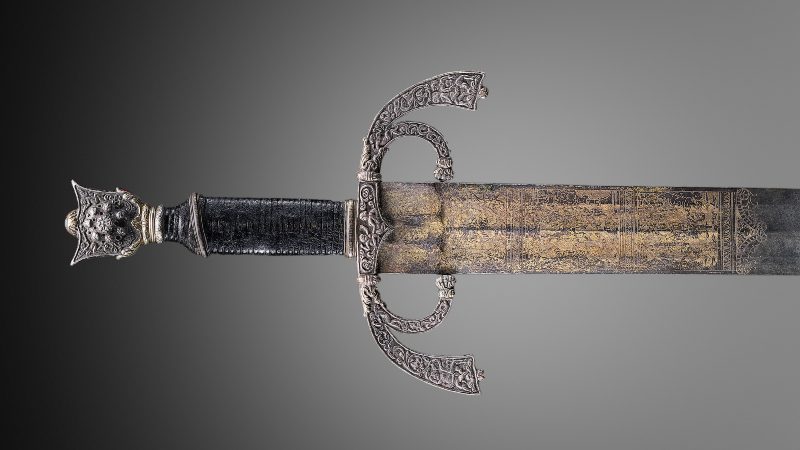
Sometimes referred to as the arms of the hilt, finger guards allowed the wielder to grip the ricasso—the unsharpened part of the blade—while protecting his fingers. They were a common feature in thrusting swords like estocs and rapiers. They first appeared in the so-called transitional swords, shifting in hilt design from the classic crossguard to the rapier.
Knuckle Guard
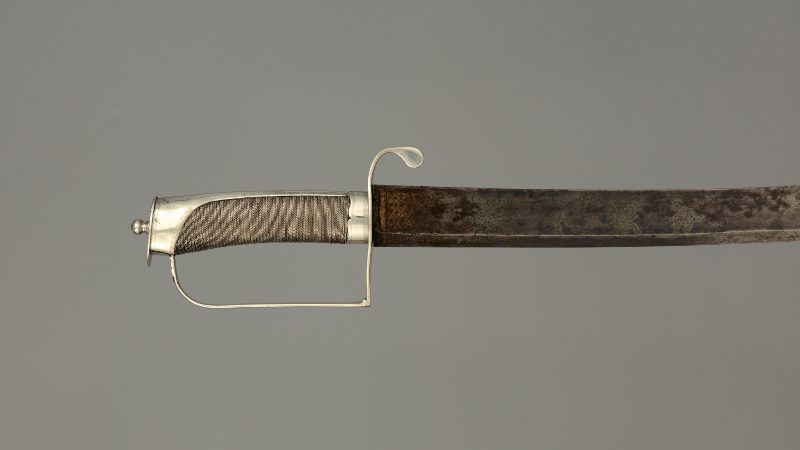
A knuckle guard is a narrow metal strip curving over the length of the handle, protecting the swordsman’s knuckles. Hunting swords, smallswords, and some cavalry sabers often had a knuckle guard. The British cavalrymen used a mix of swords and some of their cut-and-thrust sabers featured a stirrup-hilt knuckle guard.
Basket Guard

The basket guard provides more protection on the hand and usually consists of bars, plates, and rings that form a cage around the
Mortuary Style Guard

The so-called mortuary
Swept-Hilt Guard

In a swept-hilt design, the bars of the guard sweep upward in a curve, from the ricasso to the pommel. Italian rapiers often had the swept-hilt design, usually with side rings, finger rings, knuckle bows, curving quillons, and other features.
Facts About the Sword Hilt
Swords served as fundamental weapons of armies across the world. By the end of the 10th century, swordsmiths laid the foundation of
Here are the things you need to know about
A protective sword hilt started to appear in Viking swords.

The hilts on earlier swords did not serve as a protective element until the period of barbarian migrations. Some swords of the Celtic warriors had flared hilts that acted as a guard while the Roman gladius only had a relatively short wooden hand guard. By the Viking Age, swords featured a short crossguard which did not protrude far from the grip. Eventually, crossguards became longer, with some curving toward the blade.
Viking swords have been classified based on their hilts.
Swords of the Viking Age are all relatively similar, but some historians identify them based on their hilt design. In The Norwegian Viking
Scabbards often matched the decorative sword hilts.

The Ottoman Empire kilij had a scabbard specially adapted to its blade length and highly curved shape, usually with a slot into its back and covered with sprung still, making it easier to draw. Most of these swords had intricate decorations on the blade and their scabbard also featured similar motifs, sometimes matching the jewel decorations on the hilts.
Swords with lavish hilts usually belonged to a high-status warrior.

Silver
Some swords had imported blades and locally made hilts.

Many swords have multiple places of origin. Most Scottish basket-hilted swords had German blades, but mounted with hilts in the lowlands, usually in Stirling and Glasgow. It was also true for the Highland claymore and the Lowland
Some daggers had hilts similar to swords.

Early fencers used a dagger for parrying with rapier, often matching the chiseled steelwork of the
Some swords can be distinguished by their hilt design.
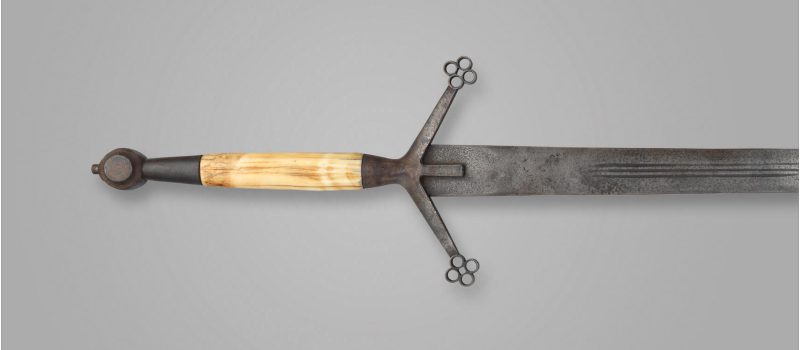
The Highland claymore is one of the swords with distinctive hilts, recognized for its quatrefoils at the end of quillons. Other swords are distinguished by their grip lengths such as the arming
A Note on Japanese Sword Hilt

Japanese swords have different hilt designs and construction. Its tsuka or hilt features several ornaments like the menuki and kashira. The latter is a decorative pommel cap at the end of the handle, yet not functioning as a counterbalance to the blade.
Japanese tsuba or
By the 14th century, the design of Japanese swords reached its peak and became a status symbol for the samurai warriors. The
Conclusion
The




